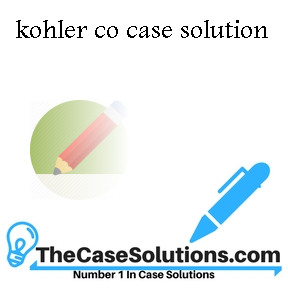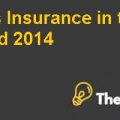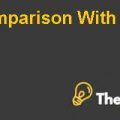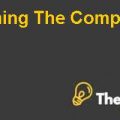Kohler Corporation :
WACC
Where
kd = Cost of debts
Tc = Tax rate (adjustment of interest expense)
D = Value of debts
E = Value of equity
V = Total value of firm
Steps of calculating the WACC
Cost of debts
Irredeemable
If debts are irredeemable, so Kd is calculated as under
It was assumed that debts were irredeemable in this case, so it was calculated as the formula mentioned above.
Redeemable
The kd or cost of debts is calculated by IRR method if debts are redeemable. Two appropriate discount rates were selected for discounting in which one rate would give positive NPV whereas the second discount rate would give negative NPV. The formula of IRR is
Where
a = lower discount rate
b = higher discount
NPV(a) = positive net present value
NPV(b) = negative net present value
Debts
Market value of debts or D is used in calculating the WACC. But in this case, the market value and book value of debts were same. Value of debts taken from balance sheet see exhibit 3a.
Equity
Market value of equity or E and book value were same in the case. See exhibit 3a for equity value.
Value of total entity
Total value of entity or V was calculated by summation of total value of equity and debts.
Taxation
Tax rate was calculated by using this formula
Cost of Equity
The ke or cost of equity is calculated by using dividend growth model and capital asset pricing model. But in this scenario, beta was not given of Kohler’s company so its competitors’ beta was used to calculate the cost of equity. Asset beta of competitors was geared by the debt equity ratio of Kohler.
Steps to follow
Assets beta
First find the asset beta through unlevered the equity beta of competitors by using the debt to equity ratio. The of formula assets beta is as under
Equity beta
Levered the assets beta into equity beta by using debt to equity ratio of Kohler’s company.
Capital asset pricing model
Calculate the cost of equity by using capital assets pricing model.
Ke = cost of equity
Rf = risk free rate of return
Beta= measure the systematic risk associated with company’s securities
Rm = market return
Risk free rate of return
Normally investments in treasury bills of government are considered risk free investment. Risk free rate of return was given is 6% in Exhibit 8.
Market return
Market return rate is normally given in the case, if it is not given so it is calculated by taking mean or geometric mean of historical market returns.
Discounted cash flows
It is the discounting method that is used to see the attractiveness of the investment choice and alternative. It uses the free cash flows of company and discount rate (normally WACC) to calculate the present value of cash flows..........................
This is just a sample partial case solution. Please place the order on the website to order your own originally done case solution.











